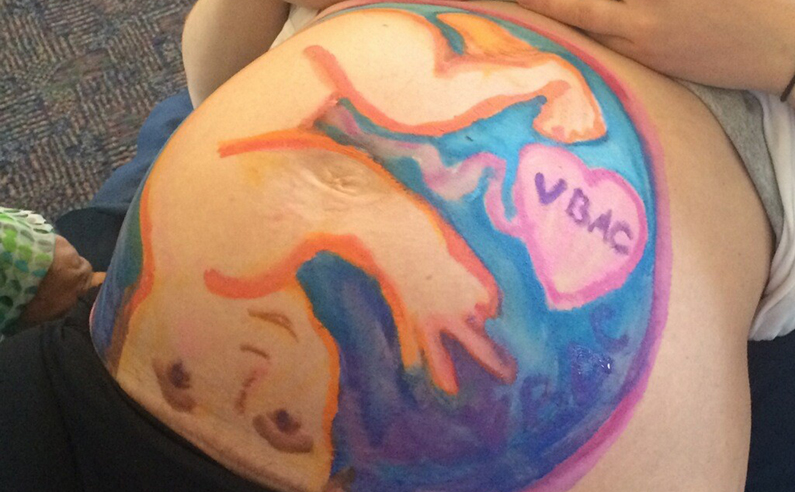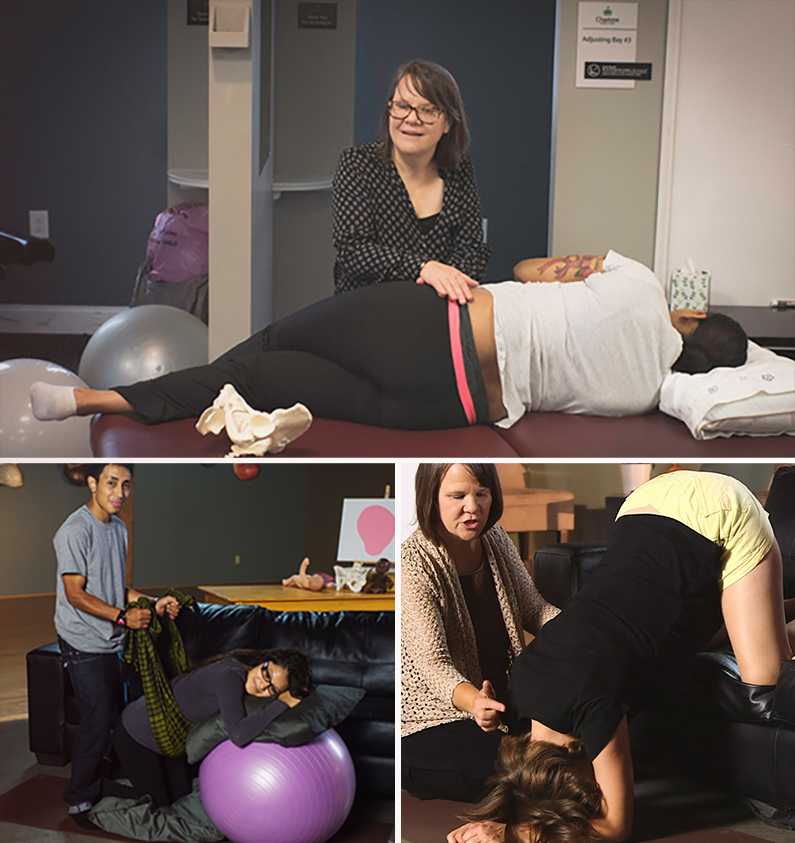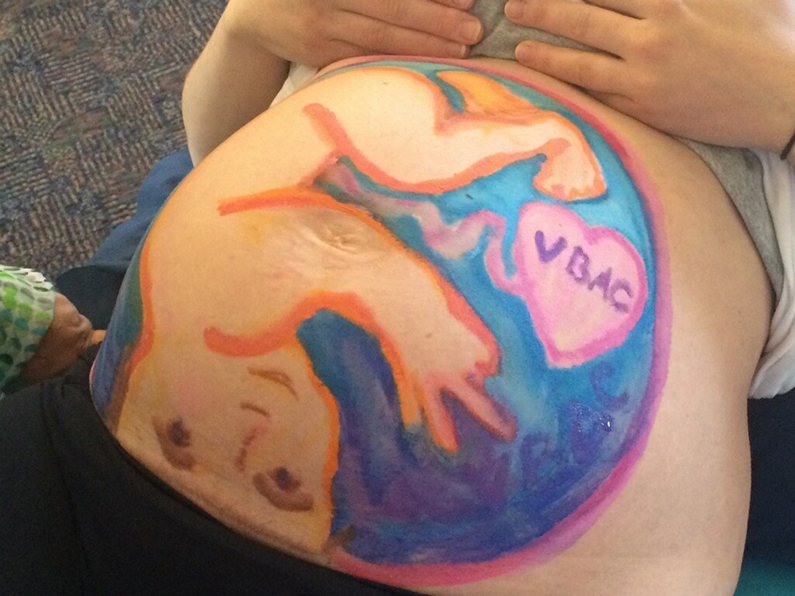
Last week, a woman seeking vaginal birth after a previous cesarean (VBAC) asked whether to share Spinning Babies® Parent Class video with her doula. She said, “I am concerned that while I am doing everything I can to implement Spinning Babies knowledge and get the baby properly positioned, that my birth attendants will not be able to help me if my baby doesn’t change sides.”
To help a baby into the most ideal position we first address the anatomy. Once we restore body Balance, then Gravity will then take care of flexion and the shape of a healthy, aligned uterus will encourage baby into a flexed position and then to the left of the pregnant parent. Movement can be an aid, especially the gentle jiggling associated with either the Rebozo Manteada or the Bum Jiggle.

The basic birth anatomy for fetal position is generally attended to by The Three Sisters of Balance and other techniques on our website. Some pregnant people need a therapeutic massage, Abdominal Maya Massage, Dynamic Body Balancing, or some other muscular fascial approach.
Dip the Hip is a technique developed by a childbirth educator in Chicago, Deb Lawrence. I suggest a more gentle version of it and post it on the website. It’s a good one for home use to allow baby to change over to the left side. We favor the left side for flexion. Remember, the uterine contractions will help baby rotate to the left to descend when there is no tension or torsion preventing such rotation. Occasionally a baby will engage from the right. That’s an email topic for another week!
Here’s the gist of my reply to the VBAC Mama who wrote last week:

“Yes, absolutely, offer both your midwife and your doula to see the Parent Class video. It has some important information in the last hour for them on engagement. However, there is another topic that is not in the video that I would like you and your Chiropractor and massage therapist to explore. The sacrotuberous ligaments holding the sacrum in place may be shortened by the car accidents. These ligaments can be released repeatedly to allow them to lengthen. Sometimes releasing the jaw and neck muscles are necessary to allow the sacrum to mobilize.
Calf Stretches are helpful to prevent tension below the sacrotuberous ligaments which connect to the sitz bones and go on to connect to the foot through the hamstrings and calf. Calf stretches then stop potential tightness from impeding the release of the pelvis. If I’m correct in assuming the sacrotuberous ligament needs release, your midwife’s expertise will not succeed unless this ligament is lengthened and allows the sacrum to swing free. Then her skills will find a response in your birthing body. The clue is +2 was where you stopped for 6 hours of pushing. That is likely a sacral issue that can be helped by
Please keep in touch and let me know. I’d love to support your VBAC. Your midwife sounds awesome and you have a great team…”
There’s a little protocol to avoid a dystocia or labor stall at +2 station for you.
A lot of my suggestions are not on my site, so I am happy to help providers through the Provider Emails. Let me know how you experience my words and suggestions. Are there things that you would like more or less of? Send a note to info@SpinningBabies.com.
Enjoy your births! And have a great week!
[tribe_events_list limit=”4″]